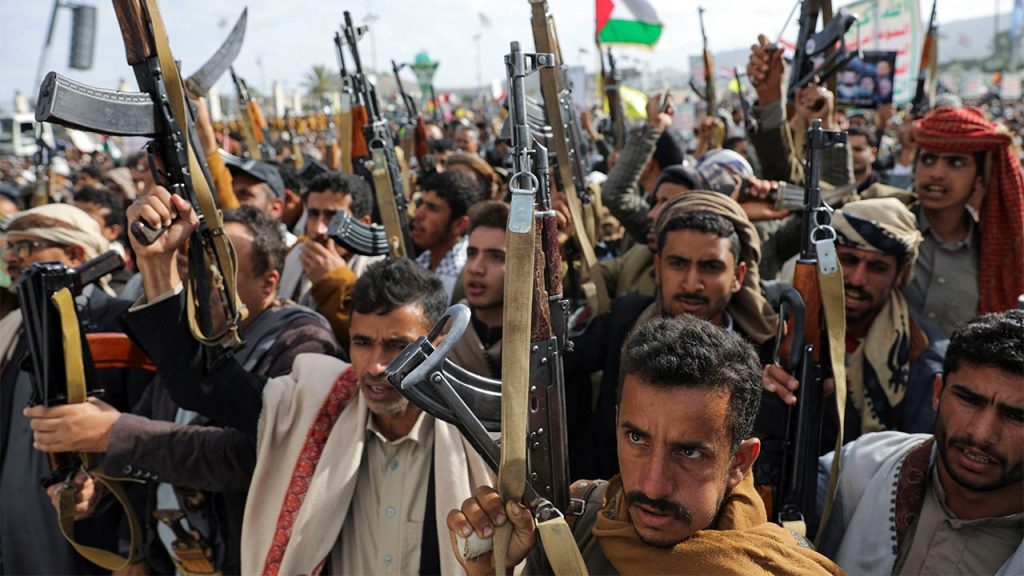The United States military conducted precision airstrikes on January 10, 2024, targeting two underground weapons storage facilities used by the Iranian-backed Houthi rebels in Yemen. These facilities housed advanced conventional weapons (ACWs) and were located within Houthi-controlled territory. The strikes, confirmed by U.S. Central Command (CENTCOM), were part of ongoing efforts to disrupt the Houthi network’s ability to threaten regional partners, as well as military and commercial vessels navigating the Red Sea and Gulf of Aden. While CENTCOM confirmed no U.S. casualties or equipment damage, information regarding Houthi losses remains undisclosed. The specific locations of the strikes within Yemen were not officially confirmed by the U.S. military. However, reports from Houthi-aligned media suggested multiple strikes occurred in the Amran and Sanaa provinces. This action represents a continuation of increased U.S. military engagement against Houthi targets in recent months.
The strikes come amidst a backdrop of escalating Houthi aggression in the region. The group, which seized control of Yemen’s capital, Sanaa, in 2014, has been engaged in a prolonged conflict with the internationally recognized Yemeni government. The Houthis have demonstrated a growing propensity to target maritime traffic, prompting the United States to intervene on at least two occasions in December 2023 to thwart attempted attacks on ships. The recent uptick in Houthi activity is seen as partially influenced by the October 7, 2023, Hamas attacks on Israel, which have emboldened the group and further aligned their actions with those of other Iranian-backed factions in the region. The Houthis have not only escalated attacks against maritime targets but have also increasingly targeted Israel itself with missile fire.
The Houthis’ increased activity stands in contrast to the relative calm achieved along other fronts in the region. While conflict between Israel and groups like Hamas in Gaza and Hezbollah in Lebanon has significantly de-escalated following cease-fire agreements and military campaigns, the Houthi threat continues to rise. Their long-range missile attacks, launched from over 1,200 miles away, present a tangible danger to Israel and disrupt vital shipping lanes and air traffic. This sustained aggression has prompted strong warnings from Israeli officials, who have vowed to retaliate against the Houthis if their attacks persist. Defense Minister Israel Katz articulated this stance in late December 2023, promising to target Houthi leadership in a manner similar to Israeli responses against other Iranian-backed forces in the region.
The Biden administration’s increased engagement against the Houthis reflects a growing concern over their destabilizing influence and their connections to Iran. The Houthis’ use of advanced weaponry, likely supplied by Iran, poses a significant threat to regional stability and international maritime security. The targeted strikes on weapons storage facilities aim to degrade the group’s capabilities and disrupt their ability to launch attacks. This action underscores the U.S. commitment to safeguarding its regional partners and protecting freedom of navigation in crucial waterways. The strikes also serve as a warning to Iran, highlighting the United States’ resolve to counter its malign influence in the region.
The escalating tensions in the region underscore the complex dynamics at play. The Houthis’ alliance with Iran and their increasing belligerence present a multifaceted challenge. The international community faces the difficult task of balancing efforts to de-escalate regional conflicts while simultaneously addressing the Houthi threat. The situation highlights the importance of international cooperation to counter terrorism and maintain stability in critical regions. The evolving relationship between the Houthis and other actors in the Middle East adds another layer of complexity, demanding a nuanced approach from policymakers.
Moving forward, the international response to the Houthi threat will be crucial in shaping the trajectory of the conflict. A comprehensive strategy involving diplomatic efforts, targeted military actions, and regional cooperation will be necessary to effectively address the challenges posed by the Houthis and their Iranian backers. The continued escalation of Houthi attacks, coupled with Israeli warnings of retaliation, raises the specter of further conflict in the region. The international community must work diligently to prevent further escalation and ensure the safety and security of all parties involved. The long-term stability of the region hinges on finding a sustainable solution to the Yemeni conflict and effectively countering the destabilizing influence of Iran and its proxies.

